Photos: Ancient Fish Had Well-Developed Lung
Like its modern-day descendants, an ancient big fish known as a coelacanth had gills, but it also sported a well-developed lung, according to a new study. An examination of present-day coelacanths shows that they develop lungs as embryos, but the organ soon becomes vestigial, an adaption that allows the fish to live in deep water and breathe solely with the gills. [Read the full story on the coelacanths]
Creatures' features in 3D
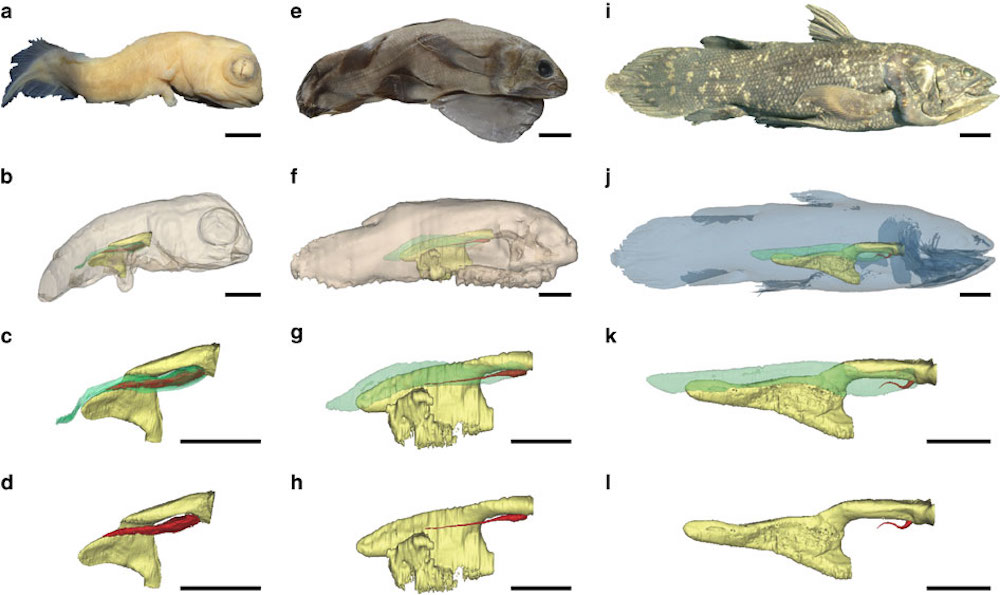
This image shows 3D reconstructions of the pulmonary complex of one species of coelacanth (Latimeria chalumnae) at different ontogenetic stages. (Credit: Brito et al. Nature Communications.)
An unexpected find
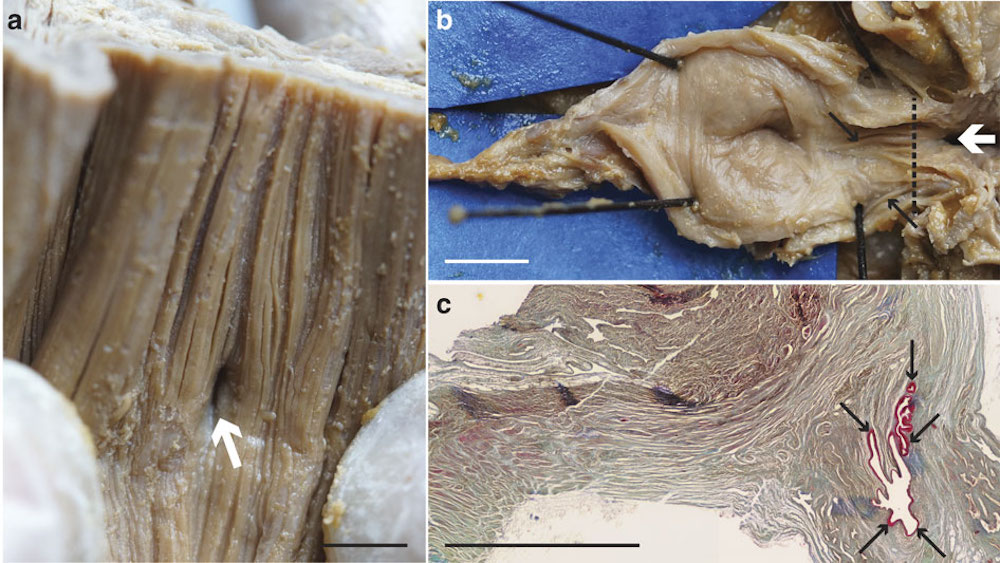
Evidence of lung anatomy in L. chalumnae. An internal view of the esophageal wall showing an opening between the esophagus and the lung in L. chalumnae (A); a dissected adult lung (B); a microscopic view of a thin slice of the vestigial lung tissue (C). The scale bar equals 0.2 inches (0.5 centimeters). (Credit: Brito et al. Nature Communications.)
An odd fish
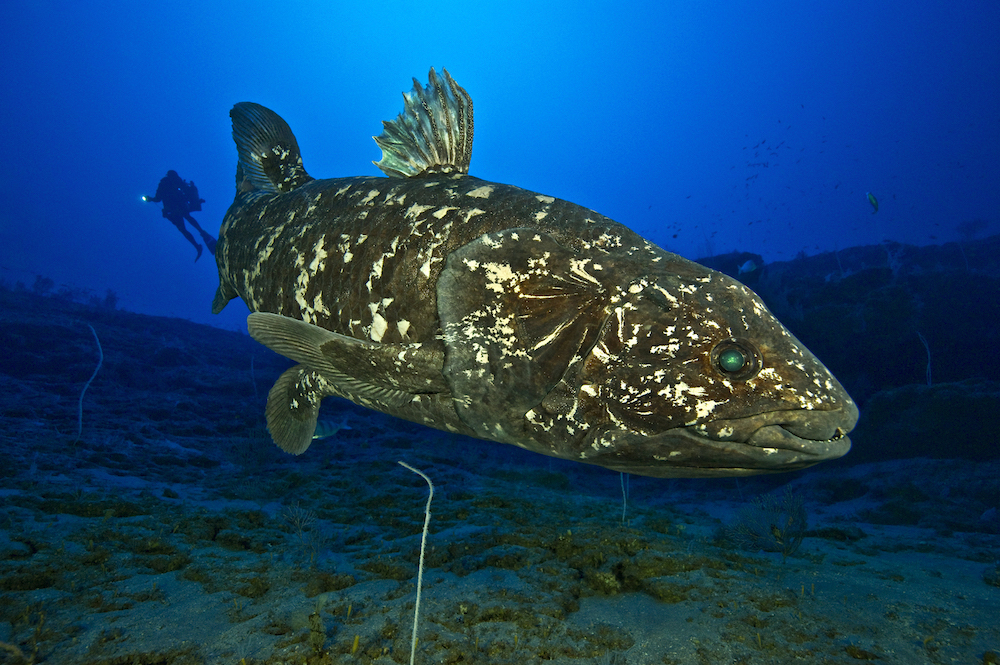
At 427 feet (130 meters) underwater, off Sodwana Bay in South Africa, the extant coelacanth L. chalumnae swims in its natural environment. (Credit: Laurent Ballesta / Andromede Oceanology Ltd / http://www.blancpain-ocean-commitment.com/en-us#!/home.)
Sign up for the Live Science daily newsletter now
Get the world’s most fascinating discoveries delivered straight to your inbox.
Extant, not extinct
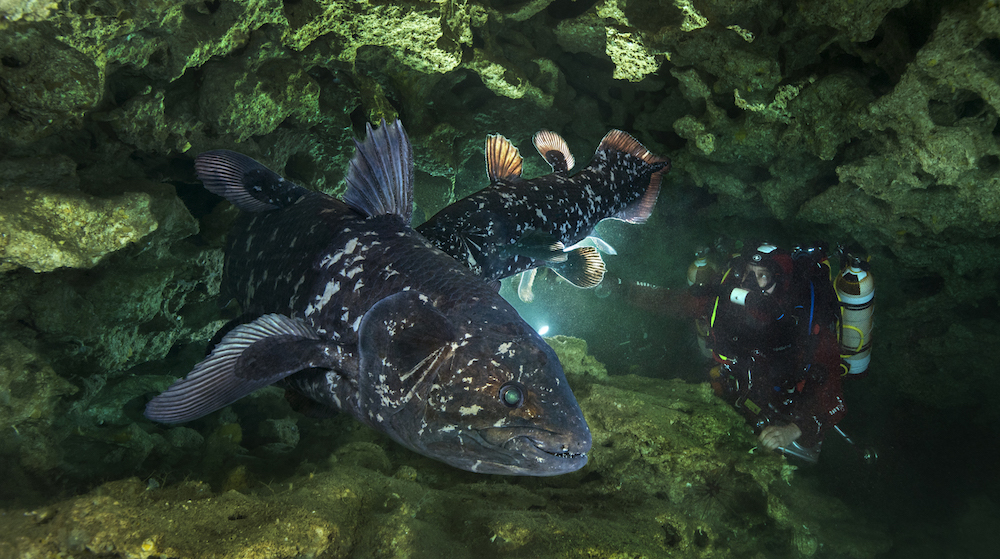
The extant coelacanth in its natural environment. (Credit: Laurent Ballesta / Andromede Oceanology Ltd / http://www.blancpain-ocean-commitment.com/en-us#!/home.)
A coelacanth specimen
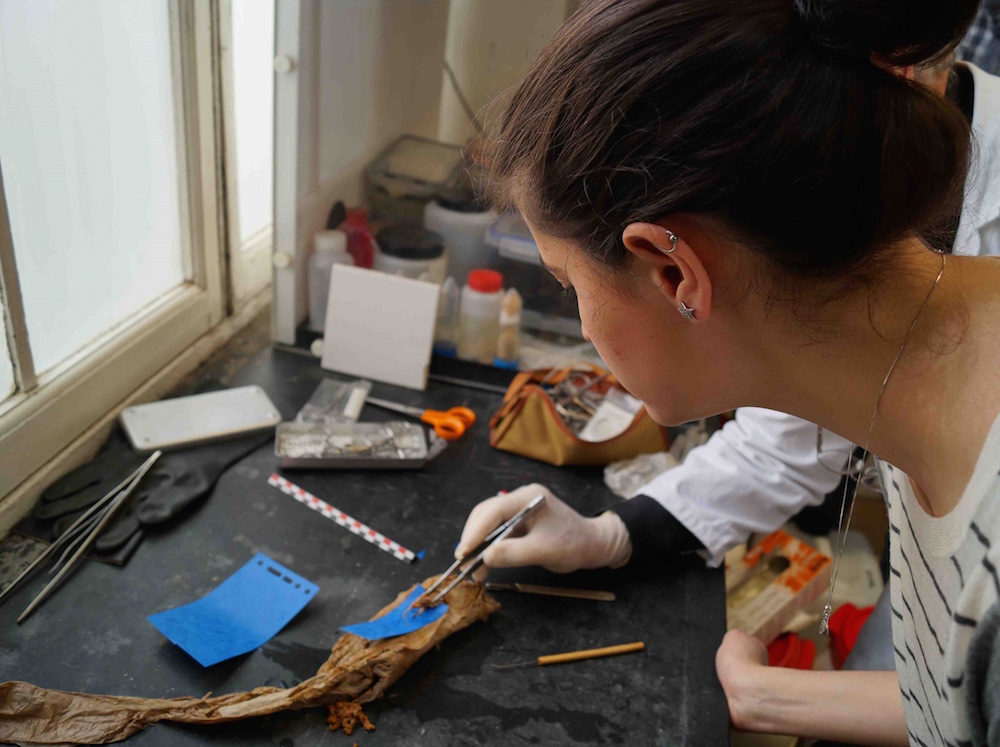
An adult specimen of the extant coelacanth after dissection. The specimen is kept in the Collection of Comparative Anatomy of the Muséum national d’Histoire naturelle in Paris, France. (Credit: Cupello personal archive/ Muséum national d'Histoire naturelle, Paris.)
They were hooked
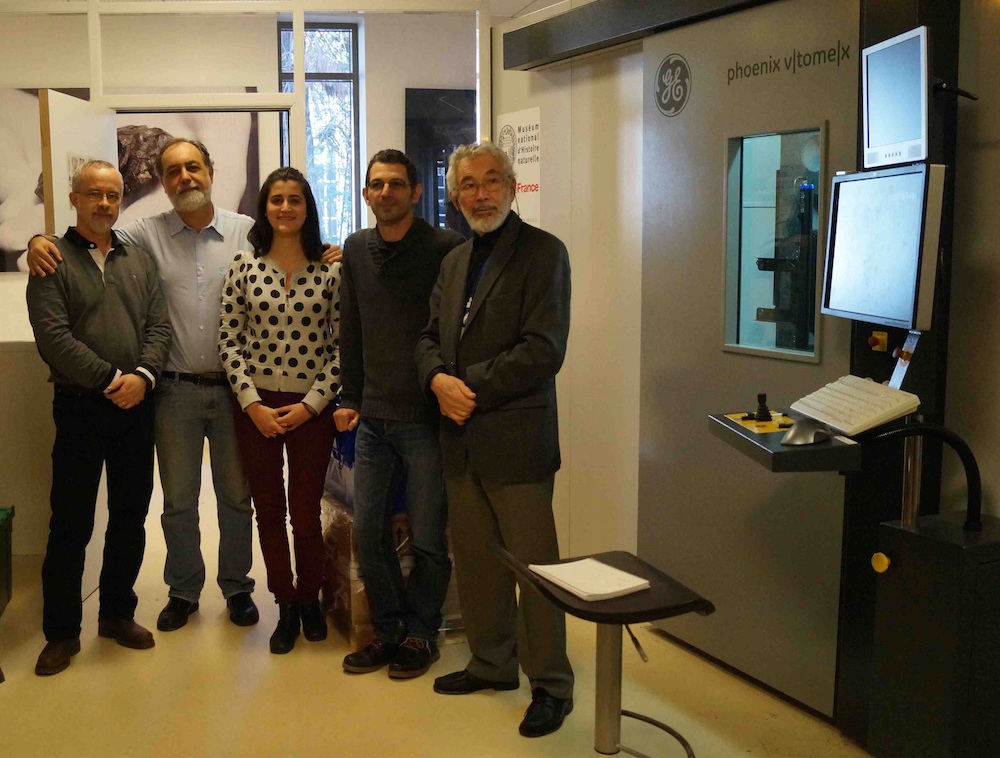
An international team of scientists studied the new fossil. Here, the researchers are pictured outside the Platform AST-RX of the Muséum national d’Histoire naturelle in Paris. (Credit: Cupello personal archive/ Muséum national d'Histoire naturelle, Paris.)
A view into the past
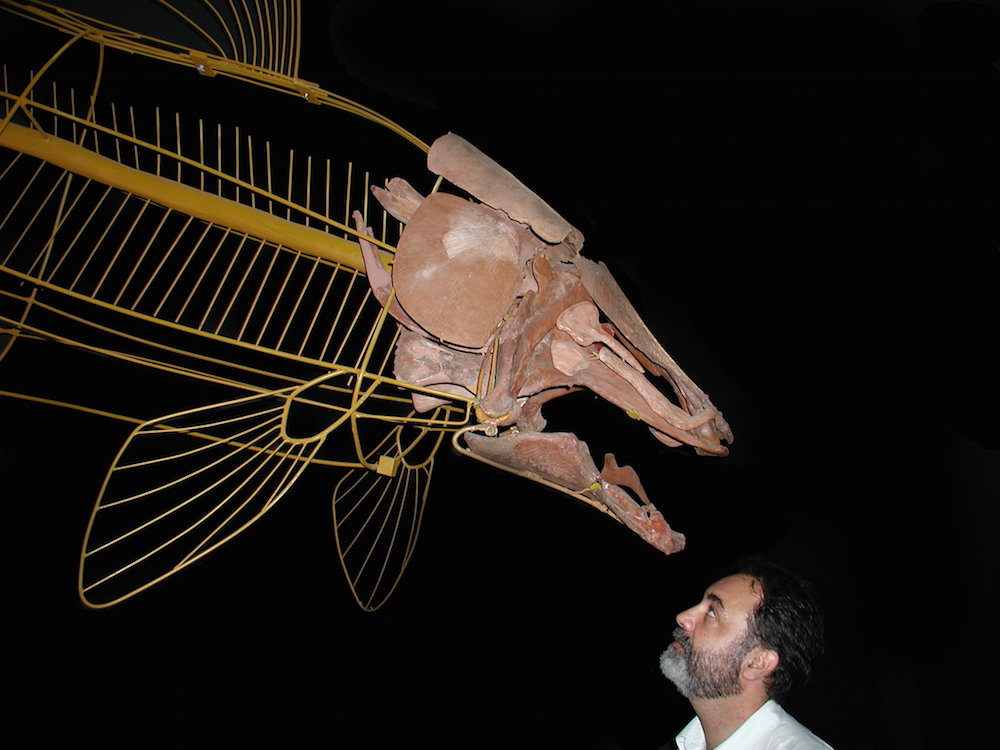
Study co-researcher Paulo Brito created a giant replica of the fossil Coelacanth Mawsonia. (Credit: Didier Dutheil personal archive/ Muséum national d'Histoire naturelle, Paris.)
Follow Laura Geggel on Twitter @LauraGeggel. Follow Live Science @livescience, Facebook & Google+.

Laura is the archaeology and Life's Little Mysteries editor at Live Science. She also reports on general science, including paleontology. Her work has appeared in The New York Times, Scholastic, Popular Science and Spectrum, a site on autism research. She has won multiple awards from the Society of Professional Journalists and the Washington Newspaper Publishers Association for her reporting at a weekly newspaper near Seattle. Laura holds a bachelor's degree in English literature and psychology from Washington University in St. Louis and a master's degree in science writing from NYU.










